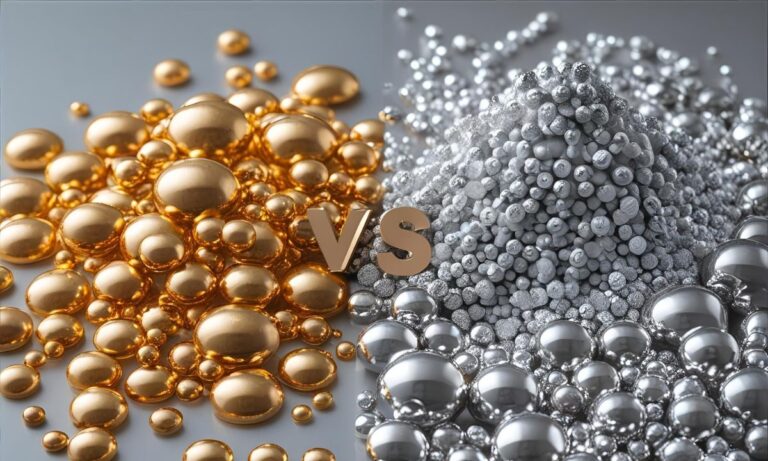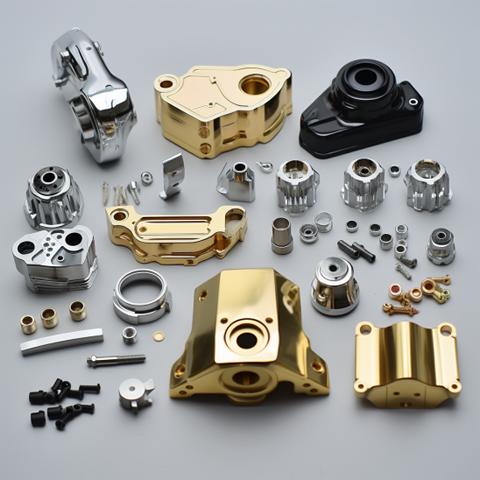TIG溶接 アルミニウムは、溶接の分野で最も技術的要求の高いプロセスの1つと広くみなされています。軽量、耐食性、高導電性を特徴とする金属であるアルミニウムを扱う場合、一連の前例のない問題が浮上し、鋼やステンレス鋼とは大きく区別されます。アルミニウムの取り扱いが悪いと、その自然酸化物レベル、低融点、水素ガスを吸収する能力のために、自然酸化物層が弱く、多孔質で、構造的に好ましくない溶接部になる可能性がある。そのため、TIG(タングステン・イナート・ガス)プロセス、またはガス・タングステン・アーク溶接(GTAW)プロセスは、精度、美観、および溶接の完全性が主な要因である場合に使用する、業界によって選択されるプロセスである。
品質管理と再現性に重点を置きつつも、材料の特性、機器の選択、シールド・ガスの選択、接合部の準備、トラブルシューティングの方法などを取り上げます。さらに、アルミ・ティグ溶接機の正しい選び方や操作方法、様々なタイプの溶接機の管理方法についても詳しく説明します。 アルミ溶接部品また、アルミのTIG溶接を試みる際に、一貫した欠陥のない接合部を作り出すことができます。本書を読み終える頃には、読者は、航空宇宙産業、自動車産業、海洋産業、および製造業における業界標準に従って、良好でクリーンな、構造的に見栄えのするTIG溶接アルミ・アセンブリを作成する方法について、十分な知識を得ることができます。
この記事は、アルミのTIG溶接の科学、方法、実践的側面について論じています。この記事は、高性能または工業プロセスにおけるアルミの溶接に関する知識を深めたい専門家や技術的訓練を受けた人々が使用することを意図しています。
目次
トグルアルミニウムのTIG溶接とは?
アルミのTIG溶接とは、ガス・タングステン・アーク溶接(GTAW)としても知られるタングステン・イナート・ガス(TIG)溶接を使用してアルミ部品を接合するプロセスを指します。ここでは、消耗しないタングステン電極によって電気アークが発生し、アルミニウム母材とフィラーロッドが不活性ガス(通常はアルゴン)の保護カバー内で溶融される。アルミニウムは熱伝導率が高く、融点が低く、溶融性の高い酸化皮膜を持つため、溶接アルミニウムには独特の着色があり、乾燥には注意が必要である。TIG溶接は、入熱と溶接池の制御が可能であるため、薄い材料、高度な組立品、その他の高性能用途に最適である。航空宇宙産業、自動車産業、海洋産業などでは、TIG溶接を使用して、耐性があり、腐食せず、見た目がきれいな溶接ビデオを製造しています。アルミニウムのTIG溶接」を成功させるには、熟練した技術、適切な設備、溶接の完全性と強度を確保するための入念な表面処理が必要です。
なぜアルミTIG溶接なのか?
タングステン・イナート・ガス(TIG)としても知られるガス・タングステン・アーク溶接(GTAW)は、精密さ、制御性、精緻な外観が求められる場合に理想的な技術です。入熱量を比類なく制御できるため、溶接士はアルミニウムの溶接プールの流動性を制御する機会を得ることができる。
TIG溶接は、アルミニウムで使用する場合に非常に便利である:
- 非溶融電極: タングステン電極は溶融しないため、安定したアーク制御が可能です。
- 汚染の代わりに TIGでは、シールド・ガスが十分に行き渡り、溶接部はほとんど汚染されずに終わる。
- AC極性対応: ACモードは、アルミニウムのTIG溶接に不可欠な深い融合を可能にしながら、酸化皮膜のクリーニングを可能にします。
- 溶接におけるアルミニウムの挙動: 溶接、特に熱影響部におけるアルミニウムの挙動には、十分な注意が必要である。
アルミニウムの溶接には、他の広く使用されている金属とは大きく異なる、アルミニウムの物理的および化学的特性をよりよく理解する必要があります。以下は、アルミニウムのTIG溶接に関連する主な課題です。
1.非常に高い熱伝導性
アルミニウムは鋼鉄の5倍の熱を伝える。つまり、熱は溶接部から素早く放散するため、アルミのTIG溶接、特に厚い材料を溶接しようとすると、より高いアンペア数が必要となる。最適な方法で溶接しないと、隙間融合や不規則な溶接溶け込みが発生します。
2.酸化物層の問題
アルミニウムの表面が空気にさらされると、酸化物の層(確実に付着する)が瞬時に形成され、それは薄い。この層は、アルミニウムの母材融点である660℃をはるかに上回る約2050℃で溶融する。TIG溶接は、交流モードが使用される場合、この層を破壊するのに役立つが、高品質のTIG溶接アルミを製造するためには、前洗浄を行うことも重要である。
3.水素空孔率感受性
水素は溶融アルミニウムに吸収されやすく、冷 却中に気孔を生じさせたり亀裂を生じさせたりする。油分、水分、または汚れたフィラー・ロッドは、水素が溶接プールに入り込む原因となる汚染物質として作用する。アルミニウム溶接部品の欠陥を避けるには、適切な洗浄と乾燥したフィラー・ロッドの使用が不可欠です。
アルミニウムTIG溶接技術概要表
ここでは、溶接パラメーター、接合タイプ、一般的な欠陥とその対処法など、TIG溶接アルミニウムの重要な側面をまとめた包括的な技術表をご紹介します。この表は、あなたの記事のアイデアを組み合わせたもので、独創的かつ高度な技術的なものです。
| カテゴリー | 技術詳細 | 推奨事項 / パラメーター |
| ベース素材 | 1xxxから6xxxのアルミニウム合金は、最も一般的にTIG溶接される。 | 溶接前に全表面をクリーニングする。 |
| 主なプロセス | 交流(AC)を使用したTIG溶接アルミニウム | ACバランス、高周波スタート、安定したアーク制御を備えたインバータTIGを使用する。 |
| 主要キーワード | アルミのティグ溶接 | 適切なACバランスとアンペアを使用し、水溜りの制御とフィラーの堆積を最適化する。 |
| 電極タイプ | 2% ランタン化またはセリウム化タングステン(1/16″、3/32″、1/8) | 用途に応じて、先端を尖らせるか、ボールチップ(AC用)に研ぐ。 |
| シールドガス | 高純度アルゴン (99.99%) | 流量15-20 CFH;厚い材料や深い浸透にはヘリウムを加える |
| フィラーロッド | ER4043、ER5356 | フィラーを母合金と用途に合わせる(強度はER5356、耐クラック性はER4043) |
| ジョイントの種類 | バット、ラップ、T、コーナー | 小さな隙間(~1/16インチ)で設計し、熱膨張を許容する。 |
| 溶接の準備 | 脱脂+ステンレス・ワイヤー・ブラシ | 溶接前に酸化膜を除去する。 |
| トーチ・テクニック | 短いアーク長(<1/8")、10~15°の移動角度 | 酸化を防ぐため、フィラーはアークコーンの外側に置く。 |
| アンペア数設定 | ベースライン厚さ0.001インチにつき1アンペア | ほとんどの薄型から中型アルミニウム・アプリケーションに対応する60~130アンペア |
| AC周波数 | アークフォーカスを制御する | 薄いアルミニウム溶接部品のクリーンで狭いアークに対応する120~200 Hz |
| ACバランス | 70% EN / 30% EP 代表値 | より深く浸透させたい場合はENを多めに、酸化物を洗浄したい場合はEPを多めに調整する。 |
ヒント
アルミニウム・ティグ溶接機の校正は、使用す る合金シリーズに合わせて適切に行い、生産 を開始する前に、常にシールドの完全性を確 認してください。アルミニウムの場合、溶接の品質は、作業者の品質と同様に、表面処理とパラメーター調整の品質に大きく関係します。
正しいアルミTIG溶接機の選択
適切なアルミTIG溶接機を選択することは、アルミを扱う際に、きれいで、強く、欠陥のない溶接を達成するために非常に重要です。アルミニウムの特性は、熱、アークの安定性、極性を注意深く制御する必要があるため、どのようなTIG溶接機でも、このような材料に使用できるわけではありません。以下は、重要な仕様と特徴です。
1.交流溶接能力
アルミニウムの酸化被膜をうまく切断し、同時に良好な溶接溶け込みを達成するには、交流(AC)が必要である。アルミニウムのTIG溶接では、ACフリーの機械は使用できません。ハイテク機器では、ACバランス(クリーニング/溶け込みの比率)を微調整することができます。
2.高周波アークスタート
電極の汚染や固着を防ぐには、高周波始動が必須で ある。高周波始動は、クリーンで無接触のアーク始 動を可能にし、特に繊細なアルミニウム溶接部 品や薄いアルミニウム溶接部品を溶接する際に、 タングステンの完全性とアークの安定性を維持す るのに役立ちます。
3.周波数/波形制御可能
最新のアルミニウム・ティグ溶接機では、交流周波数(通常は60~200 Hz)をカスタマイズすることができ、アーク・コーンをシャープにし、制御性を向上させます。波形制御(矩形波またはソフト矩形波)により、様々なアルミニウム合金と溶接継手の間で、さらなる性能微調整の機会が与えられます。
4.パルス溶接の機能
パルス設定は、特に薄い材料や温度に敏感なアセンブリーで、印加される熱量と反りを制御するために使用されます。これは、航空宇宙、自動車、電子機器などでアルミニウムのTIG溶接を行う場合に不可欠です。
5.リモートおよびフットペダルによるアンペアコントロール
電流の変化は、フットペダルや指先のリモコンを使ってリアルタイムで簡単に制御でき、TIG溶接アルミでよく見られる複雑な接合部や曲線の多い接合部での過熱や浸透不足の危険を防ぐことができる。
シールドガスと充填材
アルミTIG溶接におけるフィラー・ロッドとシールド・ガスの選択は、溶接品質、機械的性能、耐食性に直接影響します。さまざまなアルミニウム合金は、さまざまなフィラー組成およびシールド環境に独特に反応するため、特に重要なアルミニウム溶接部品を製造する場合は、十分な情報に基づいて選択することが不可欠です。
1.適切なフィラーロッドの選択
フィラー・ロッドの適合性は、母合金と溶接仕上 げの意図する特性に基づいている。アルミニウム・フィラーには、以下のようなも のが一般的である:
ER4043
このシリコンベースのフィラーは流動性があるため、溶接が可能です。耐クラック性に優れ、6xxxシリーズの母材に適合する。しかし、ER5356と比較すると弱い。
ER5356
より強く、延性のある改良型マグネシウムフィラー。構造物や溶接後の陽極酸化が必要な部分に適している。アルミニウムの5xxxおよび6xxx合金に一般的に使用できます。
ER4045
ER4043と同様、流動性が高く、ホット・クラックが発生しにくい。溶接速度が速く、濡れ性の良い溶接ができるため、自動車用として一般的である。
適切なフィラーを選択することで、亀裂、気孔、溶接後の脆さの問題(異種アルミニウム合金を使用する場合)を防ぐことができます。
2.シールドガスの選択
大気汚染に対する溶接プールのシールドを適切に行う必要がある。アルミニウムのTIG溶接の標準ガスは、以下の通り である:
100% アルゴン
アルゴン溶接は、良好な溶接アーク、交流でのクリー ニング能力、溶接プールの優れた制御性を提供する。ほとんどすべての板厚のアルミニウムに対応し、あらゆる用途に使用できる。
アルゴン/ヘリウム・ミックス
ヘリウムを加えると、入熱とアーク・エネルギーが高 まり、厚いアルミニウムへの溶け込みが促進される。重いアルミニウム溶接部品を含む産業用途では、 75%ヘリウム/25%アルゴンの混合が一般的で ある。
3.ガスの流量と純度
流量: 最も一般的な流量は、ほとんどの作業で15~20CFH(立方フィート毎時)である。必要不可欠な保護チャンバーは、少なすぎると酸化を招き、多すぎると乱流やコンタミネーションの原因になる。
純粋さ: 溶接には、純度99.99%以上のアルゴンを使用できる。アーク不安定性とポーラスなティグ溶接アルミニウムは、汚染ガスの産物である。
シールド・ガスに関しては、100% アルゴンを選ぶべきである。ヘリウムまたはアルゴン-ヘリウム・ブレンドは、特に厚いアルミニウム溶接部品の溶け込みを高めるために、特別な場合に使用できる。
表面処理:溶接部をきれいにする解決策
表面処理は、高品質のTIG溶接アルミの結果を確保する上で、最も重要なステップの一つです。他の金属とは対照的に、アルミは空気に触れると、ほとんど時間をかけずに強力な酸化皮膜を形成します。この酸化物は、母材(660℃)よりもかなり高い温度(2050℃)で溶けるだけでなく、水分や油分、炭化水素などの汚染物質を捕捉します。この酸化物が除去されないと、特に耐荷重 溶接部や耐圧溶接部において、アーク安定性 の低下、気孔の発生、不完全な融合、構造不良 を引き起こす。
1.機械洗浄
まず、清潔なリントフリーの布で、アセトンまたはアルミニウム専用の脱脂剤を使って、汚れや油分、塗装を拭き取ります。次に、アルミニウム専用に使用するステンレス鋼ワイヤーブラシで、酸化被膜をこすり落とす。再酸化を避けるため、ブラッシングは溶接直前に行う。
2.化学洗浄
より要求の厳しい用途では、アルカリ液(水酸化 ナトリウムなど)による化学エッチングの後に、硝 酸リンスを使用することもある。これにより、有機および無機堆積物の両方が除去され、溶接を行うために表面が化学的に活性化される。
3.関節のフィットアップとエッジコンディショニング
エッジのフィット・アップと準備をしっかり行な うことで、アークが制御され、ガスが良好にカ バーされる。荒いエッジはわずかに面取りし、すべての表面にバリや酸化物のしみがないようにする。これは、深い融合が必要なティグ溶接でアルミニウム片同士を接合する場合に備えるためである。
精密な組立品や高純度アルミニウム溶接部品を扱う際には、一貫した清潔な準備が不可欠です。どんなに優れたアルミニウムTig溶接機でも、汚染された表面を補うことはできません。
TIG溶接のパラメーターと方法
一貫性のある高品質のアルミ溶接は、溶接パラメーターとそれに対応するトーチ関連技術を習得して初めて製造できる。熱応答が速く、溶融温度が低く、汚染に敏感なアルミは、電気的構成、アークの距離、溶加材の分布をほぼ正確に制御する必要があります。このセクションでは、プロフェッショナル・レベルのアルミTIG溶接に使用される、最も重要なTIGパラメーターとベスト・プラクティスの概要を説明します。
1.アンペア数設定
入熱はアンペア数によって直接制御される。一般的なアルミニウムの最小厚さは、母材厚さ0.001インチにつき1アンペアですが、アルミニウムは熱交換率が高いため、それ以上を必要とすることがよくあります。例えば
- 1/8アルミニウム(125-140アンペア)
- 薄いシート(0.040インチ):40~50アンペアパルス制御
非常に厚い材料を溶接し、材料や厚さを継続的に変更したり、継ぎ手部分を変更したりする場合を除き、ライブ・アンペアのフット・ペダルまたは指先リモートをお勧めします。
2.ACバランスコントロール
最近のTIG装置では、電極マイナス(EN)と電極プラス(EP)の交流比を変えることができる:
- EN: 細部への浸透を与える
- EP: 酸化膜を酸化させる
通常のベースラインは、70 % EN、30 % EPである。ENが高くなるにつれ、浸透性の利点は洗浄作用を失うことで得られるため、酸化の激しいアルミニウムには適さない場合があります。
3.AC周波数の調整
交流周波数の上昇(通常60Hzから200Hz)により、アークが狭まり安定する。トイレの使用回数が増える:
- 方向性をコントロールしやすくなる
- 弧のうねりを抑える
- 溶接の見通しを良くする
これは、特に薄いアルミ溶接部品や化粧アルミ溶接部品を加工する場合に有益です。
4.タングステン電極の選択と準備
- 交流アルミニウム溶接: 適切な種類のタングステンを使用する。
- 純タングステン: ACで球状のチップを作り、古いマシンでも安定している。
- 2%ランタン化またはセリウム化:より優れたアークスタートと消費低減のため、現代のインバーターでは選択されている
アンペア数は、タングステンのサイズ(3/32、1/8″など)に合わせる必要がある。サイズが大きすぎると、アークが不安定になったり、電極が溶けたりすることがあるからだ。
5.技術とフィラーロッドの取り扱い
ロッドを溶接プールの手前側に一定のペースで挿入 し、決してアークに直接挿入しないこと。こうすることで、乱流と酸化の数を制限できる。母材に適したフィラー・ロッド合金を適用し (ER4043またはER5356が最も一般的)、非常に 危険な水素吸収を避けるため、ロッドを濡らしたり汚 したりしないようにする。
6.高度とトーチの角度
アークの長さは、アークワンダとコンタミネーションを最小限に抑えるため、1/8インチ以下が理想的です。トーチ:トーチの角度は、進行方向に対して約10~15°上向きに傾ける。こうすることで、視界が広がり、シールドガスが行き渡る。
これらのパラメータは、練習とともに学び、習得することが重要であり、材料の挙動を十分に理解することが、特に航空宇宙、自動車、および構造用途において、TIG溶接によって達成されるアルミの高品質接合部の背後にあるはずである。
アルミニウム溶接TIGの溶接技術
アルミのTIG溶接では、機械の設定と同様に技術も重要です。プロは次のような点に注意しています:
- トーチの角度: 歩いている方向に垂直に15度の角度を保つ。
- アークの長さ: ポロシティやコンタミネーションを減らすため、アーク長を小さく保つ(1/8″以下)。
- 移動速度: 遅すぎると過度の熱が加わり、歪みが大変なことになる。コントロールできる程度に速く、しかし熱くならない程度に。
- フィラーロッド: 溶加材のステップを繰り返し定期的に行い、溶加材 をアークではなく、溶接プールの前面に沈める。
溶接プールに細心の注意を払う必要がある。アルミニウムは急速に溶融するため、溶融池は急速に液体に変化し反射するため、はっきり見えないことがある。
継手設計-アルミ溶接
アルミのTIG溶接において、構造的に健全で、外観がきれいで、欠陥のない溶接部を実現するには、効果的な継手設計が不可欠です。アルミニウムは熱伝導性が非常に高く、溶融温度が低いため、過熱すると容易に反りが生じます。従って、溶接部の接合構成は、明確に考えなければなりません。このセクションでは、適切な継手設計が、特にアルミTIG溶接機を使用する場合に、応力集中を減らし、反りを防止し、溶接品質を最適化する方法について説明します。
コレクティブ・デザインの重要な原則
アルミの熱力学的性質から、接合部の設計では、熱を素早く放散し、熱負荷によって膨張することを考慮する必要があります。アルミニウムは鋼鉄と異なり、熱を加えると2倍にも膨張するため、緩く嵌め合わせた部品は簡単に歪んだり吹き飛んだりします。膨張を補い、完全な溶け込みを実現するため、突合せ継手では通常、小さなルート・ギャップ(通常1/16インチ)を残す。高い精度が要求されるTIG溶接の役割 は、接合部が安定した溶接プールを維持し、シ ールド・ガスを使用して完全に被覆できる可能 性があることである。特筆すべきは、形状が狭かったり、マルチパス の作業が割り当てられている場合、トーチとフィ ラー・ロッドをできるだけ容易に設計することで ある。
アルミTIG溶接で広く行われている継手の種類
突合せ継手、重ね継手、T字継手、コーナー継手は、アルミニウムの継手として最も一般的なものです。この2つは、その利点と技術的な考慮点が異なります。
- 突合せ継手は、平板の溶接に非常に適している。ルート開口部が小さいため、溶け込みが良く、熱膨張が許容される。
- ラップ・ジョイントは位置合わせが簡単で、機械的強度も高いが、溶接前によく洗浄しないと表面間に酸化物を閉じ込めやすい。
- Tジョイントは、フレーム、トラス、サポートに多く見られる。アルミは柔らかい金属であり、熱を受けると溶けてしまうため、振動を避けるために、これらは良い固定具でなければならない。
- コーナー・ジョイントは、エンクロージャーやボックスでは有効だが、熱の加え方に注意しないと、薄い素材を焼いてしまう。
このような場合、溶接工は、特に重要なアルミニウム溶接部品を作る際には、構造強度と溶接部へのアクセス性の両方を考慮しなければなりません。
エッジの準備と固定
TIG溶接では、アルミは汚染や不完全な融 着に対して非常に敏感であるため、エッジの 準備が非常に重要である。厚い材料(3/16 "以上)の場合、接合エッジを面取り(30~37.5 mm)し、フィラーを正しく付着させるための溝を形成する必要がある。エッジは酸化物やバリのない状態にし、ステンレス・ブラシや化学エッチング液による前処理が必要である。
また、アルミニウムの柔らかい性質と、熱による動きへの影響を受けやすい性質に対処するためには、その固定具が決定的に重要です。銅、アルミニウム・チル・バー、剛性クランプ、タック溶接を使用して、反りが生じないようにする必要がある。薄板を扱う場合は、溶接プールを支えるためにバックアップ・プレートを使用することもできる。熱による変形に対するアルミの強度が低いため、接合部の適切な拘束が第一の関心事となる。
TIGアルミニウム溶接 機械に関する考察
アルミTIG溶接機の性能は、溶接中の継手設計の良し悪しに直接影響します。アルミニウムに使用される高品質のTIG溶接機では、ACバランス・コントロール(クリーニングと溶け込みに使用)、周波数調整(アーク精度の設定に使用)、高周波スタート(コンタミネーションのないアーク開始の分離に使用)などの機能が使用できます。これらの機能がない場合、最も注意深く設計された継手であっても、不十分なアーク安定性、不十分な溶融、または酸化物の捕捉により、性能が低下する可能性がある。精密な作業や負荷のかかる作業を行う場合、溶接工 は、操作する機械の種類に見合った継手の種類を 確保する必要がある。
ティグ溶接アルミニウムの一般的欠陥とその防止策
適切な設備と技術があっても、TIGアルミ溶接には、注意深く管理しなければ溶接欠陥につながる独特の課題があります。酸化物による汚染、不適切な入熱、不十分なシールドは、溶接部の強度だけでなく、外観も損なう可能性がある。最も頻繁に発生する原因による新たな潜在的問題と、実践と管理を通じて体系的に防止するための可能な方法を、ティグ溶接アルミの作業時に遭遇する可能性が最も高い問題で以下に概説する。
1.気孔率(ガス封入)
気孔率:これは、溶接プールの凝固中に液体ビヒクル中に水素ガ スが捕捉されることによって生じる結果である。空気中の水分、汚染されたフィラー・ロッド、不潔な母材に含まれる可能性のある水素との反応性が高いアルミニウムに適用すると、特にこの現象が発生しやすい。
予防だ:
- 純度99.99%のアルゴンシールドガスを使用し、適切な流量(15~20CFH)を維持する。
- 好ましくは、エンドフィリングロッドを乾燥した状態に保ち、油や酸化で汚染されないようにする。
- 底の金属をアセトンでよく洗浄し、専用のステンレス製ワイヤーブラシで磨く。
- 隙間風やファンは避け、溶接中にガスの拡散が妨げられないようにする。
2.不完全融合
原因溶接金属が母材または隣接するパスと完全に 接合していない場合、この欠陥が発生する。通常、低アンペア、高速移動、または表面 の未清掃が原因である。
予防だ:
- 材料の厚さに応じて適切なアンペア数を適用する(原則として、アルミニウム0.001インチにつき1アンペア)。
- 移動速度を、母材が完全に溶ける速度まで下げる。
- スペースを入念に洗い、継ぎ目は完全に開いて露出させる。
- 円弧の長さを短くし、どちらかのジョイントに対して正しい角度で曲げる。
3.クラッキング
理由割れは、特に高強度アルミや異材溶接で、凝固中(熱間割れ:hot cracking)または冷却後(冷間割れ:cold cracking)に起こる。通常、溶加材が悪いか、冷却が速いために起こる。
予防だ:
- フィラーメタルを選択すべきである。一例として、ER5356はER4043とは異なり、強度が高く割れにくい。
- 熱衝撃の問題があるため、厚い部分は150 200oFまで予熱する。
- 汚染された表面で溶接を行わず、溶接前に酸化被膜が きれいに除去されていることを確認すること。
- 応力集中を軽減するために、優れたジョイント形状を活用する。
4.熱の加えすぎと歪み
理由アルミニウムは熱伝導率が高いため、溶接部に過度の熱が伝わり、制御できなくなる可能性がある。薄い場合、断面が焼け焦げてしまったり、大きな構造物が単に反り返ってしまったりする。
予防だ:
- パルスTIG溶接を適用することで、平均入熱と溶け込みが低くなる。
- 部品をクランプする場合は、必要に応じてバッキングバーやチルブロックを使用する。
- 厚い部分には、1回のパスで溶接を行おうとする のではなく、数回のパスで熱を加える。
- ACバランス制御と周波数設定材の調整により、アークエネルギーを微細化し、副次加熱を最小限に抑えることができる。
5.酸化した溶接部(介在物と酸化)
説明アルミニウムには付着性の酸化皮膜(融点~2050 °C)があり、溶接前に除去する必要がある。除去しないと、介在物を形成して完全な融合を阻害し、溶接部を弱くする。
予防だ:
- ACバランス制御を使用することで、溶接面の清浄度を高める。
- 溶接前には必ずブラッシングと脱脂を行うこと。
- 洗浄した表面に素手で触れないようにすること。オイルが汚れを防ぐのと同様に、素手で触れることは汚れの原因となる。
- 時々、ガスレンズとカップを交換して、適切な遮蔽率を維持する。
アルミニウムTIG溶接の実際の用途
TIG溶接 アルミニウムは、美観、強度、耐食性が重要な産業で不可欠です:
- 航空宇宙 胴体構造パネル、サポート、燃料タンク
- 自動車とモータースポーツ インタークーラーパイピング、シャシー、ホイール
- 海洋工学: 船体、はしご、レールなど、耐食性に優れたアルミニウム合金
- 医療機器: 画像機器や移動機器に使用されるアルミニウム製フレームワーク
- 軽量エンクロージャー: 保護ケーシングは、技術をカバーするだけでなく、消費者向け電化製品や産業用電子機器にデザイン要素を追加する筐体を作成します。
これらすべての用途において、適切なアルミニウム・ティグ溶接機を選択し、アルミニウム・ティグ溶接を安全かつクリーンに行う能力を習得することが最も重要です。
専門家のヒントとコツ
アルミニウムのTIG溶接の技術に磨きをかけたいプロの方は、以下の上級者向けのヒントを参考にしてください:
- バックパージ: 密閉されたチューブやボックスに溶接する場合は、アルゴンでバック・パージする必要がある。
- 予熱: 厚い部分がある場合に有効である。熱衝撃を抑えて融着を良くするには、150~200°F(65~93℃)で予熱する。
- フットペダルの使用: リアルタイムでのアンペア数の精密制御により、溶接プールの挙動に基づいた調整が可能です。
- 溶接後のクリーニング: ステンレス・スティール製ブラシを使用して、通常、化粧品溶接部のすすと溶接後の酸化物を除去する。
結論
アルミニウムのTIG溶接をマスターすることは、溶接士のキャリアにおいて重要なマイルストーンです。その技術は完璧であり、溶接部の最高度の制御と美的外観、そして最強の機械的特性をもたらしますが、そのためには職人の深い知識と詳細、そしてトップレベルの技術が必要です。
母材の準備、適切なアルミTIG溶接機の選択から、アーク技術の完成、アルミTIG溶接継手の欠陥管理に至るまで、このプロセスは最高の技術を持つ者でさえ挑戦します。しかし、プロフェッショナルなレベルで一貫してアルミTIG溶接ができる人は、需要の高い産業や精密製造の職務への扉を開くことができます。
構造フレーム、船舶用コンポーネント、複雑なエンクロージャーのいずれを製造する場合でも、次のような能力を活用することで、自信を持って作業することができます。 アルミニウム TIGプロセスによる部品の溶接は、現代世界では依然として金字塔である。
よくある質問
1.アルミニウムのティグ溶接にはどのようなセットアップが最適ですか?
高周波始動、2%ランタン化タングステン、純アルゴン・ガスを使用したAC TIGマシンを採用する。溶接前に、アークが堅く滑らかに保たれていることを確認する。
2.なぜティグ溶接されたアルミニウムには気孔があるのですか?
通常、湿気や汚れが気孔の原因となる。アセトンとステンレス・スチール・ブラシ以外の溶剤では決して洗浄せず、フィラー・ロッドは乾燥した場所に保管してください。
3.アルミニウムのティグ溶接機にはどのような機能が必要ですか?
ACバランス、パルスモード、高周波スタートがあります。これらの特性は、熱の制御、アークの安定性、アルミニウムの欠陥の減少を実現します。
4.アルミ溶接部品の強度を確保するには?
適切な溶加材(ER5356など)を使用し、洗浄し、必 要な場合は予熱し、完成後に溶接部をチェックして完全 な強度を確認する。









